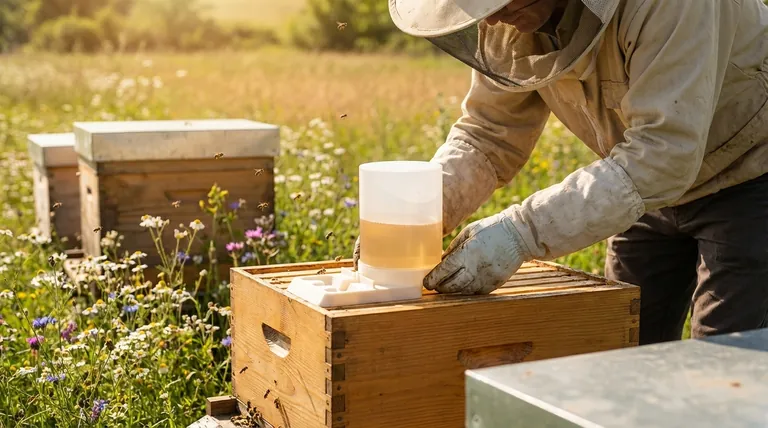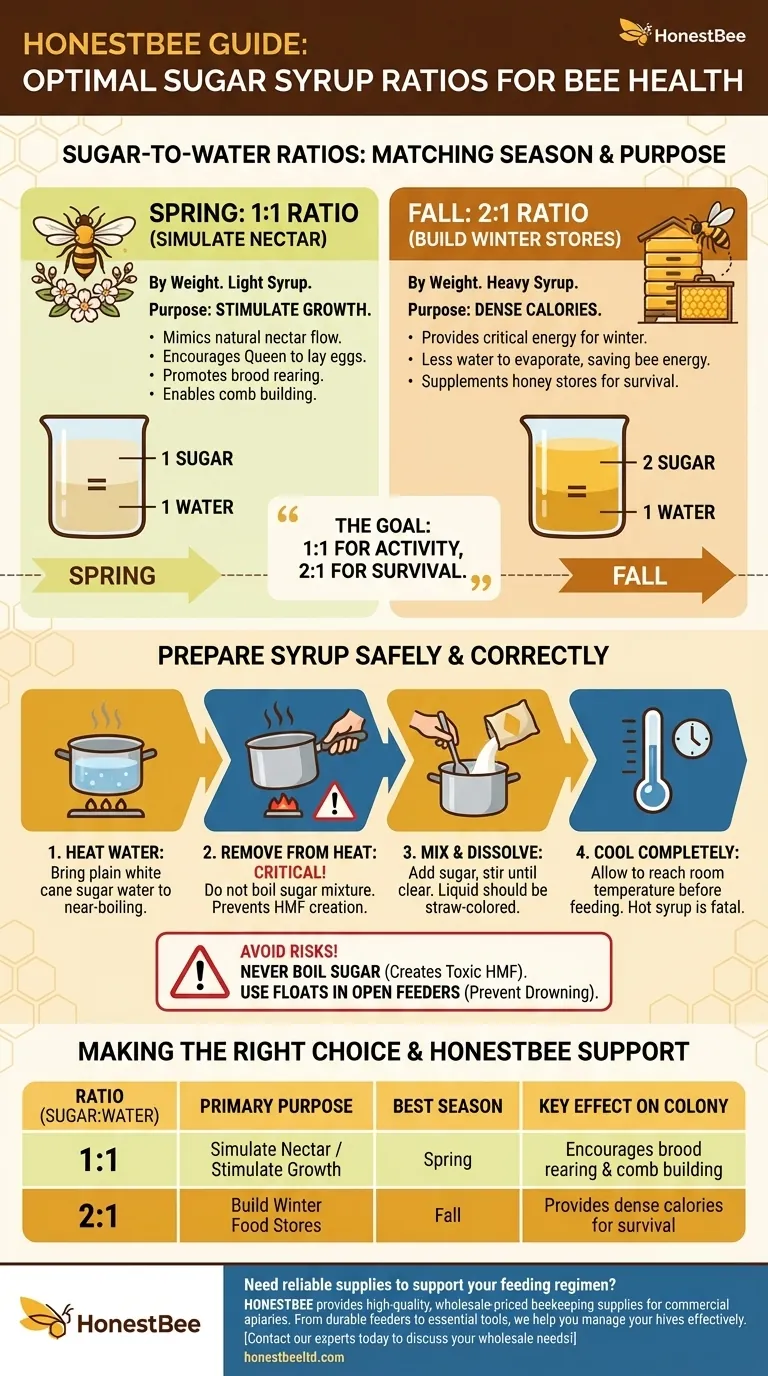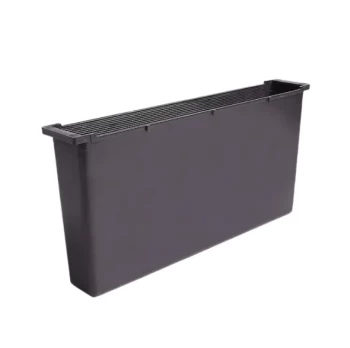The correct sugar syrup ratio for your bees depends entirely on your goal and the time of year. For spring, a light 1:1 ratio of sugar to water (by weight) is used to simulate nectar and stimulate growth. For fall, a heavy 2:1 ratio is used to provide dense calories for winter stores when natural honey is scarce.
The choice between a 1:1 and 2:1 sugar syrup is not about preference, but about purpose. Lighter syrup encourages colony activity and expansion, while heavier syrup provides critical energy reserves for survival.

The Purpose of Each Syrup Ratio
Understanding why you are feeding your bees is the first step in choosing the right recipe. Each ratio sends a different signal to the colony.
The 1:1 Ratio: Simulating Spring Nectar Flow
A 1:1 ratio of sugar to water by weight closely mimics the consistency of natural flower nectar. This is the standard for spring feeding.
This lighter syrup is easy for bees to consume and process. It stimulates the queen to lay eggs, encourages the colony to rear brood, and provides the energy needed to draw out new comb on foundation.
The 2:1 Ratio: Building Winter Stores
A 2:1 ratio of sugar to water by weight creates a much thicker, more calorie-dense syrup. This is the preferred ratio for fall feeding.
When preparing for winter, bees must evaporate water from the food they store. This heavy syrup has less water, meaning the bees expend less energy to process and cap it for their winter pantry. It is used to supplement low honey stores and ensure the colony has enough food to survive the cold months.
How to Prepare Syrup Safely and Correctly
The preparation method is just as important as the ratio. Improperly prepared syrup can be harmful or even toxic to your bees.
The Correct Ingredients and Tools
Use plain white cane sugar (table sugar). Avoid brown sugar or other varieties, as their impurities can cause dysentery in bees. You will need a container large enough to hold both the water and sugar.
The Heating Process
Heat the required amount of water in your container. You can bring it to a gentle boil or just near-boiling. The key is to get it hot enough to dissolve the sugar completely.
The Mixing Method
Remove the water from the heat source before adding the sugar. This is a critical step. Pour the sugar into the hot water and stir until all the sugar crystals are fully dissolved. The final liquid should be clear with a light straw color.
The Critical Cooling Step
You must allow the syrup to cool completely to room temperature before giving it to the bees. Feeding hot syrup can fatally harm them.
Understanding the Key Risks
Feeding bees seems simple, but there are two significant risks every beekeeper must avoid to ensure the health of their colony.
The Danger of Boiling: Hydroxymethylfurfural (HMF)
Never boil the sugar and water mixture. Boiling sugar syrup can create a compound called Hydroxymethylfurfural (HMF), which is toxic to honey bees. This is why you must remove the water from the heat before mixing in the sugar.
Choosing a Feeder and Preventing Drowning
Bees can easily drown in open pools of syrup. Different feeders are designed to mitigate this risk.
Common types include internal frame feeders, top feeders placed above the brood boxes, and external feeders like Mason jars or buckets with small holes in the lid. If using an open feeder like a frame feeder, add floats (such as wood shavings or small twigs) to give the bees a safe place to land.
Making the Right Choice for Your Colony
Your decision should be guided by the specific needs of your hive during the current season.
- If your primary focus is stimulating spring growth and comb building: Use the light 1:1 syrup to mimic nectar flow and encourage expansion.
- If your primary focus is providing dense winter food stores: Use the heavy 2:1 syrup to help bees efficiently build their pantry for survival.
- If your primary focus is ensuring bee safety: Always prepare syrup without boiling the sugar and cool it completely before providing it in a safe feeder.
By matching the syrup to the season, you can effectively support your colony's health and productivity throughout the year.
Summary Table:
| Ratio (Sugar:Water) | Primary Purpose | Best Season | Key Effect on Colony |
|---|---|---|---|
| 1:1 | Simulate Nectar / Stimulate Growth | Spring | Encourages brood rearing & comb building |
| 2:1 | Build Winter Food Stores | Fall | Provides dense calories for survival |
Need reliable supplies to support your feeding regimen? HONESTBEE provides commercial apiaries and beekeeping equipment distributors with high-quality, wholesale-priced beekeeping supplies. From durable feeders to essential tools, we help you manage your hives effectively and safely. Contact our experts today to discuss your wholesale needs!
Visual Guide

Related Products
- HONESTBEE Entrance Bee Feeder Professional Hive Nutrition Solution for Beekeeping
- HONESTBEE Round Hive Top Bee Feeder for Syrup
- Rapid Bee Feeder White Plastic 2L Round Top Feeder for 8 or 10-Frame Bee Hives
- Professional Hive Front Entrance Bee Feeder
- Classic Boardman Entrance Bee Feeder Hive Front Feeding Solution
People Also Ask
- What is the best feeder for bees? Choose the Right Feeder for Your Hive's Success
- How to make an entrance feeder for bees? A DIY Guide for Safe & Effective Feeding
- How is the mesh ladder and barrier installed in the feeder box? A Step-by-Step Guide to Prevent Bee Drowning
- What is a common problem with hive front feeders? Avoid Robbing Frenzies and Protect Your Hives
- How does the entrance feeder method work? A Guide to Simple But Risky Hive Feeding



















